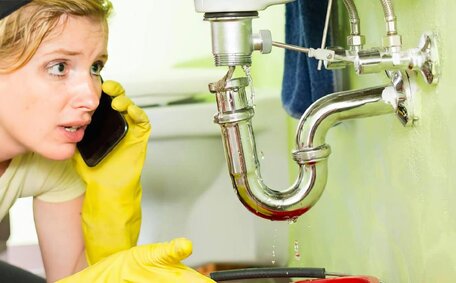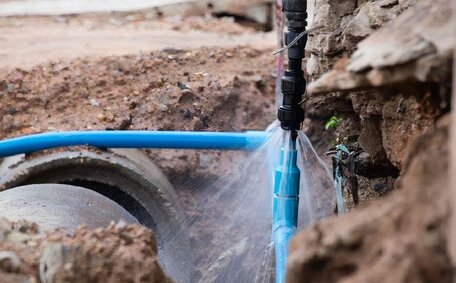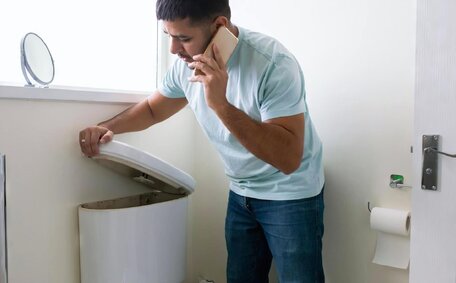Understanding Heat Loss in Hot Water Systems
All hot water systems lose heat over time, a process known as standby heat loss. This occurs through the walls of hot water tanks and pipes as heat transfers to the surrounding air. The rate of heat loss depends on factors like insulation levels, air temperature differences, and exposure to drafts.
Proper insulation controls standby losses by slowing the rate of heat transfer. Materials like fibreglass and foam reduce conduction through tank and pipe walls. Well-insulated systems can maintain water temperature for longer periods, meaning less reheating and maximum energy savings.
For gas and electric water heater tanks, heat is constantly leaking out when not in use. Insufficient insulation leads to more standby loss, so tanks require thick insulation wraps.
Likewise, exposed pipes waste heat quickly if not properly lagged. Even small hot water lines benefit from foam sleeves or fibreglass tape.
Beyond efficiency, insulation also provides environmental gains. Limiting standby losses lowers energy use for water heating, cutting fossil fuel consumption and emissions. So insulation serves the dual purposes of saving money on energy bills while also reducing one’s carbon footprint.
Insulating Your Hot Water Tank
Installing insulation to insulate your hot water tank provides substantial benefits. Tank insulation reduces standby heat losses, meaning the water stays hotter for longer between heating cycles. This allows for lower thermostat settings without compromising performance.
Insulated tanks can save energy and 15-45% on water heating bills. Adequately insulated pipes also deliver hotter water at the tap, so less heating is needed. The improved efficiency equals lower energy use and reduced carbon emissions.
For gas, electric, and solar storage tanks, fibreglass blankets or foam jackets are ideal. These wrap around the middle section between top and bottom. Apply according to manufacturer specifications, securing tightly and sealing edges thoroughly.
For DIY tank insulation, materials like insulation batts or polystyrene foam sheets work well.
Use aluminium tape to fully seal seams. Use aluminium tape to fully seal seams. Measure thickness to meet insulation ratings based on climate zone.
Insulate your older tanks to add lifespan by slowing corrosion under the insulation. So beyond efficiency gains, it protects your investment in the appliance itself. Keep tanks properly insulated for optimal performance.
Choosing Insulation Materials
When selecting insulation for hot water tanks and pipes, key factors to consider are effectiveness, durability, and sustainability.
Fibreglass is a common insulation blanket or batt option. Fibreglass is a common insulation blanket or batt option. Proper protective gear is needed when handling.
It offers good thermal performance for the price, though lacks durability over decades.
Polyurethane foam has extremely high R-value insulation. Closed-cell rigid foam boards provide superb efficiency and longevity, though use petrochemicals in production. Open-cell spray foams demonstrate great air sealing when applied correctly.
Elastomeric foam sleeves slip over pipes to reduce conduction. This rubbery material is flexible, lightweight, and durable. It stretch fits over joints and valves without restricting access.
Mineral wool (rock or slag wool) resists high temperatures. It repels moisture and delivers fire resistance too. Though not asbestos, fine mineral fibre is an inhalation irritant requiring masks and gloves.
When managing insulation projects, utilise materials suitable for the application and space. For DIY work, factor in safety measures for handling whichever type you select. And ensure proper installation for optimal efficiency and heat retention.
Compare brands and insulate your hot water system with the most eco-friendly option available too.
Installing Pipe Lagging
Insulating hot water pipes prevents unnecessary heat loss as hot water flows from the tank to the tap. Bare pipes waste energy through conduction and convection, so proper lagging is essential.
Pipe insulation involves wrapping pipes with materials that resist heat transfer. Common options suited for domestic plumbing include:
- Elastomeric foam: Flexible rubber pipe insulation slips over pipes up to 2” diameter. Self-sealing longitudinal slits allow it to open and seal back tightly.
- Polyethylene foam: This rigid foam sleeve has an adhesive backing for bonding tightly to pipes. Useful for straight pipe runs up to large 4” diameters.
- Glass wool wraps: Mineral fibre insulation with adhesive casing to spiral wrap pipes. Offers thermal efficiency but avoids exposure during handling.
To install pipe insulation:
- Clean piping so insulation bonds tightly.
- Check pipe diameter and select appropriate insulation thickness and width.
- Slide insulation over pipe, sealing seams tightly with no gaps.
- Use aluminium tape at ends to prevent moisture ingress.
- Insulate all hot water branches from tank to fixtures.
For optimum results, insulate full pipe length including elbows, joints and valves. Proper installation ensures insulation effectiveness and delivers hotter water while preventing surface condensation.
Insulating hot water pipes lowers heat waste, reducing energy consumption by 10-30%. Lower bills and save energy as emissions are reduced when less fuel burns to heat smaller volumes.
Maximizing Energy Savings
While insulation is the prime method for reducing standby heat losses from hot water systems, additional strategies can further maximise energy savings:
- Lower the thermostat to 49-60°C. Insulated tanks and pipes stay hotter longer, allowing lower settings without performance loss.
- Insulate exposed cold pipes to prevent condensation that wastes heated water. Protect all pipes near exterior walls or in unheated basement spaces.
- Install heat traps on the hot water inlet/outlet fittings to contain tank heat better than standard valves.
- Use pipe insulation with high R-values like polyethylene or urethane foams rather than basic fibreglass wraps.
- Add an insulation jacket around electric resistance tanks which lose more heat without one.
- Fit water-saving aerators and low-flow showerheads to reduce demand, allowing the system to heat less volume.
Savvy homeowners combine proper insulation with adjunct upgrades to save energy and amplify savings. Monitoring your water and energy bills helps save energy and provides feedback on the effectiveness of conservation efforts. With some adjustments, families can cut hot water heating bills by 25-50% while also reducing associated carbon emissions.
Maintaining an Efficient System
To sustain efficiency gains from hot water system insulation and upgrades over time, periodic maintenance is essential. Simple regular tasks help safeguard savings and investment in your water heater.
Inspect insulation wraps annually before winter for any tears, gaps, or moisture accumulation. Repair damaged sections and reseal edges to restore integrity that deteriorates slowly each year. Repair damaged sections and reseal edges to restore integrity that deteriorates slowly each year.
Top up gaps as needed.
Also, insulate your valves, joints, and elbows, which are vulnerable points for heat loss if exposed. Rewrap these completely. Ensure insulation through unheated spaces like basements or garages is intact.
Check around the tank yearly for signs of sweating or dripping pipes which indicate heat loss. Insulate any cold water pipes or sections prone to condensation buildup.dripping pipes which indicate heat loss. Insulate any cold water pipes or sections prone to condensation buildup.
Beyond insulation, also check your hot water system annually for leaks which waste heated water and energy. Watch for pooling water under pipes or tanks and inspect joints closely. Consult a licenced plumber for suspected internal leaks evident through increased costs or corrosion.
Check positioning as well. Relocate closer to high use points if possible.
Systems located far from fixtures waste more heat in lengthy pipe runs. Systems located far from fixtures waste more heat in lengthy pipe runs.
Have your water heater system professionally assessed every 2-3 years. Qualified technicians examine efficiency performance, insulation effectiveness, and appliance condition. Preventative maintenance maximises operational life, delivering continued energy savings over decades.
Hiring a Professional
While DIY hot water insulation projects can provide good efficiency upgrades for many homeowners’ systems, certain complex situations warrant expert help.
Gas tank water heaters contain combustion components with associated dangers if improperly accessed or altered. Likewise, directly handling electric resistance elements risks electrocution without proper precautions.
For such water heater systems, trust Northmead Plumbing’s licenced professionals for insulation upgrades or repairs involving exposed internal parts. Our qualified technicians safely access restricted areas to maximise insulation coverage and effectiveness.
Houses with intricate piping networks or multi-story vertical plumbing can challenge DIY abilities. We map out custom solutions accounting for all branches, recirculation loops, and auxiliary lines.
Allow our insulation specialists to evaluate your home’s unique requirements and craft a plan tailored to your family’s hot water usage patterns. We optimise layouts and select materials using decades of hands-on expertise.
Contact Northmead Plumbing today at 1300 349 338 or jobs@northmeadplumbingservices.com.au to schedule a consultation. Our team provides obligation-free assessments and competitive quotes for upgrading insulation or overall system efficiency.
Investing in managed professional insulation brings substantial long-term savings through enhanced performance, reduced standby losses, and prolonged equipment lifespan. Allow us to apply proven measures maximising efficiency gains.






